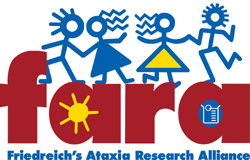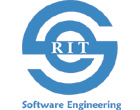The FARA Patient Registry Project

The FARA project has essentially grown out of a need for a patient registry for Friedreich's Ataxia (FA) which will facilitate recruitment for clinical research studies. FA is a neurogenetic disease that usually presents as a coordination and balance problem. Disease onset often occurs in childhood but adult-onset forms have been well-documented. FA is progressive in all cases and subsequent loss of coordination and strength in the extremities forces affected individuals into wheelchairs often several years after diagnosis. Individuals with FA can also have impaired vision, speech, and hearing, as well as cardiomyopathy and diabetes. FA is considered a rare condition. It affects about 1 in 50,000 individuals. Right now, there is no cure or effective treatment for the disease. However, researchers have made many substantial strides in understanding the pathophysiology of this condition and are in the early stages of planning of proposing and planning for studies of agents that can either slow or stop the disease. One of the challenges related to clinical research studies for a rare disease is identifying patients with the condition who might eligible for participation in studies. The FARA Patient Registry project can directly help address this problem.
The patient registry will capture demographic and basic clinical information from individuals with FA worldwide through an interactive website. . The registry will store the information collected and FARA will be able to query the database for researchers and pharmaceutical companies who need candidates for clinical trials. A patients' basic contact information and personal health information (PHI) will be housed by the registry so it must be secure according to the Health Insurance Portability and Accountability Act of 1996 (HIPAA). Access to patients interested in and eligible for clinical trials will substantially aide in the reduction of clinical research resources, specifically time and cost. Implementation of this solution will bring researchers and individuals with FA one step closer to a treatment.
http://www.faresearchalliance.org/

One of the hallmarks of RIT's engineering programs is a senior project sequence that each student completes before graduation. Software engineering students take this two-course sequence during the Winter and Spring quarters just prior to graduation. The goal of the courses is to have seniors synthesize and apply the knowledge and experience they have gained at RIT and on co-op assignments.
Companies and other organizations with challenging technical problems frequently contact software engineering faculty, and in many cases these problems are appropriate for assignment to a senior project team. The following sections describe activities that are commonly performed as part of the courses.
http://www.se.rit.edu
|


